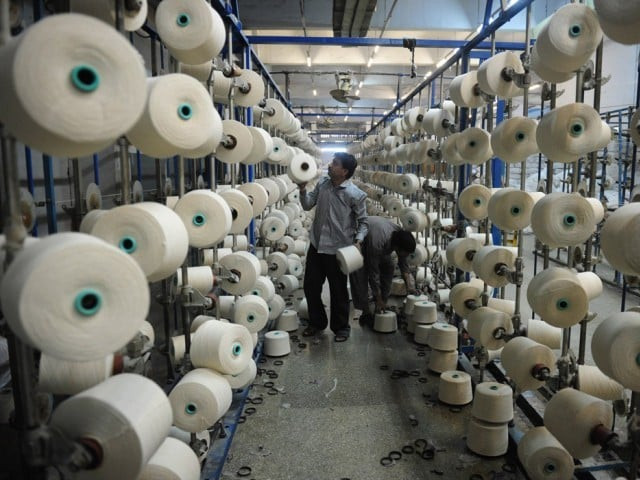Urges value addition in textile exports, modernisation of manufacturing units. PHOTO: AFP
LAHORE:
Pakistan’s manufacturing sector, once considered the backbone of its economic expansion and employment generation, is witnessing one of its most critical slowdowns in recent years. A sharp decline in private investment, dropping by more than 46% over the last six years, has raised alarm among industrialists and economists who believe that the stagnation in production and value addition could have long-term consequences for the country’s growth trajectory.
According to Ali Imran Asif, Senior Executive Committee Member of the Lahore Chamber of Commerce and Industry (LCCI), private investment in the manufacturing sector shrank from Rs706 billion in financial year 2018-19 to Rs377 billion in 2024-25, reflecting the weakest phase of industrial expansion in over a decade.
He said the current level of investment was not even enough to offset the depreciation of machinery and assets in large-scale industries, indicating a potential decline in the sector’s total productive capacity. “We are not just facing a temporary slump, we are facing erosion in our industrial base,” he warned. “Without addressing the structural issues of competitiveness, productivity and innovation, Pakistan’s manufacturing will remain trapped in stagnation.”
The drop in investment has not come in isolation. The manufacturing and mining sector’s contribution to the country’s GDP has almost been stagnant, ie, 13.2% over the past six years.
Export-oriented industries such as textile, leather and engineering goods have also struggled to maintain their global competitiveness due to rising input costs, currency fluctuations and inconsistent government policies. Pakistan’s large-scale manufacturing (LSM) output fell by 1.5% in FY25, following a modest growth of 0.92% in FY24.
Among neighbouring economies, India’s industrial growth in FY25 was 4% whereas Bangladesh’s industrial growth rate for FY24 was 3.98%, driven by strong policy support and export diversification.
Economists argue that while high interest rates have dampened borrowing for expansion, the deeper problem lies in policy uncertainty and low investor confidence.
Asif said the slowdown was not just a result of monetary tightening, but stemmed from years of weak growth and declining profitability in manufacturing. “When industries do not see demand, profitability or stability, they hold back investment, it’s as simple as that,” he remarked, calling for a comprehensive industrial revival plan.
Economic analyst Dr Shahid Saleem said that Pakistan’s industrial landscape had been squeezed between two major pressures – import restrictions and declining domestic demand. “The government’s efforts to stabilise the currency and control the current account deficit have come at the expense of industrial growth,” he said. “When factories operate below capacity, jobs disappear, exports fall and tax collection suffers, it’s a chain reaction that hits every part of the economy.”
He added that regional competitors like Vietnam and India had aggressively pursued investment-friendly policies, offering fiscal incentives and export rebates that Pakistan had yet to fully match.
Experts believe that with inflation showing signs of moderation and the economy entering a phase of relative stability, the revival of manufacturing must be the next national priority. The sector not only drives exports but also provides employment to millions across urban and semi-urban centers.
Nevertheless, they added that Pakistan’s manufacturing revival would depend on how effectively it could blend short-term stabilisation with long-term industrial strategy. To reverse the investment slump, the country needs to rebuild investor confidence.
“Large industries must once again become the engine of growth,” said Asif. “This can only happen if the environment is conducive, energy tariffs are rationalised and the government ensures consistency in policies.”

